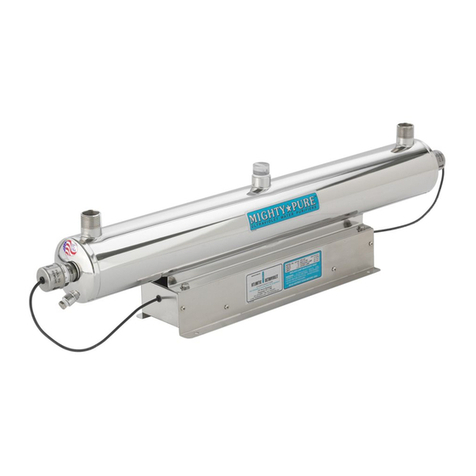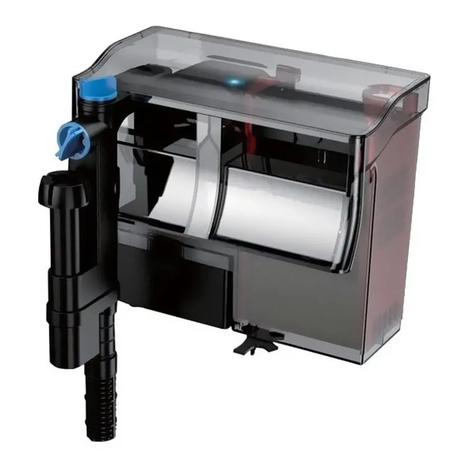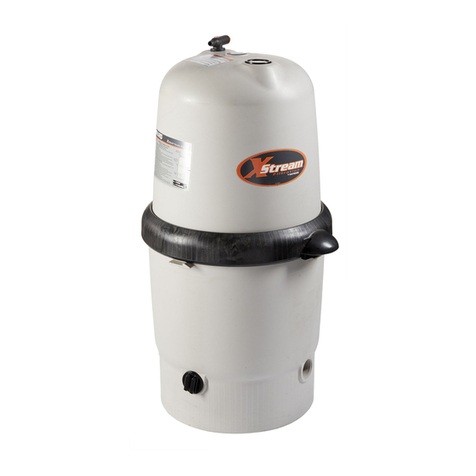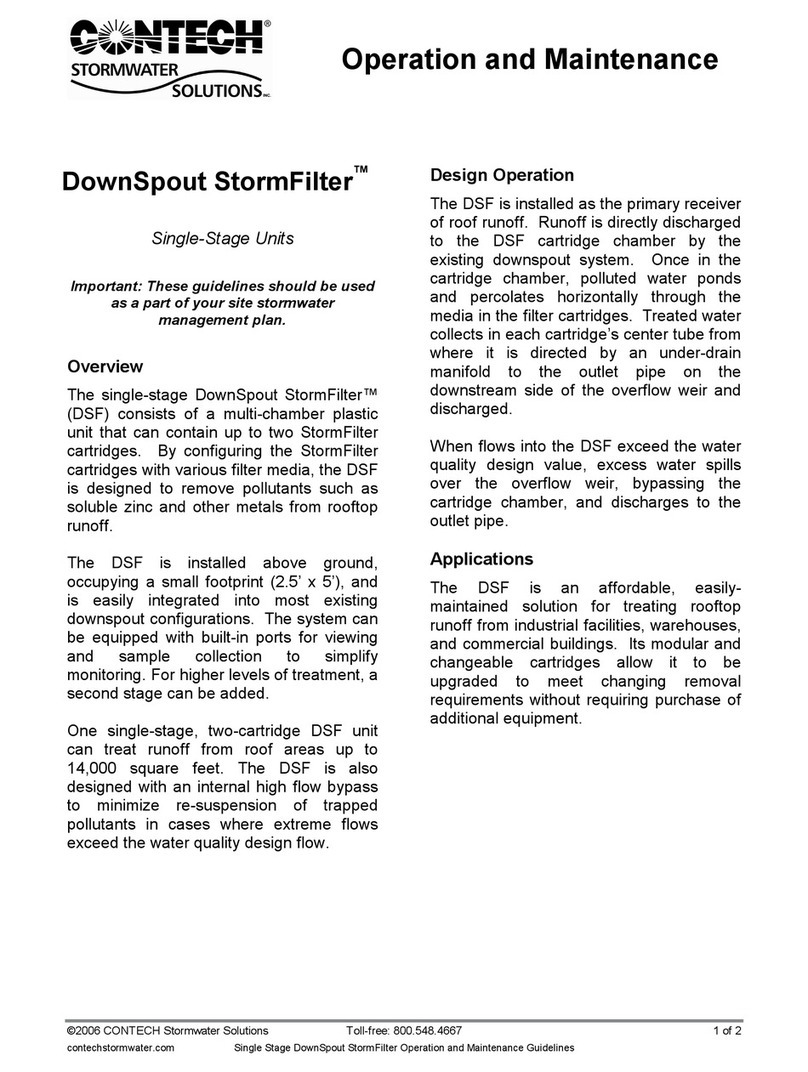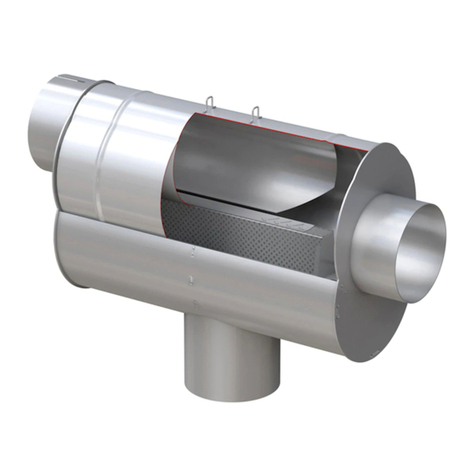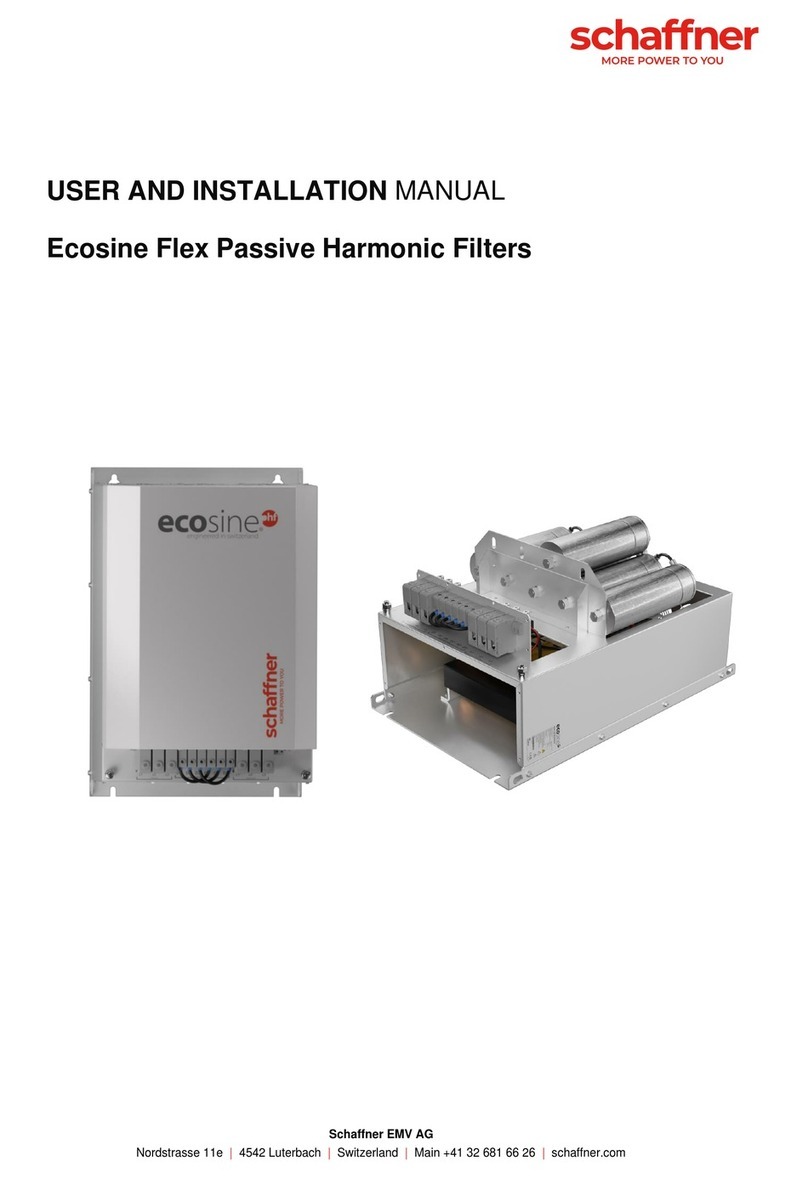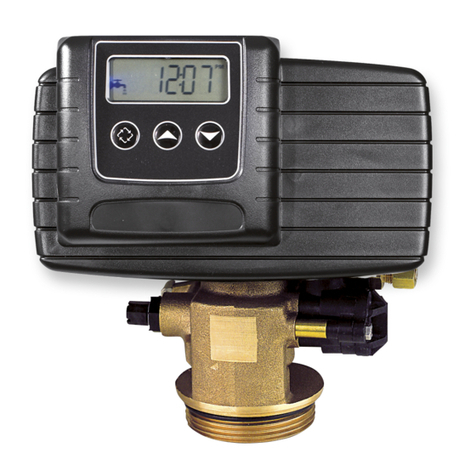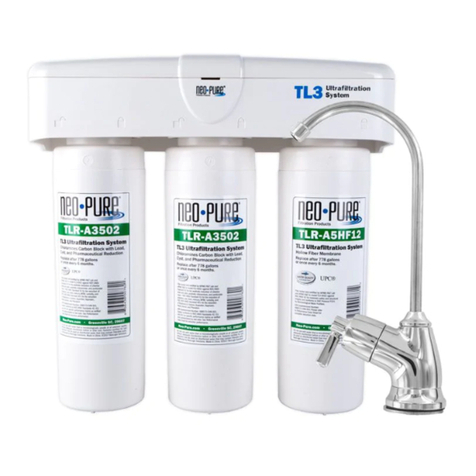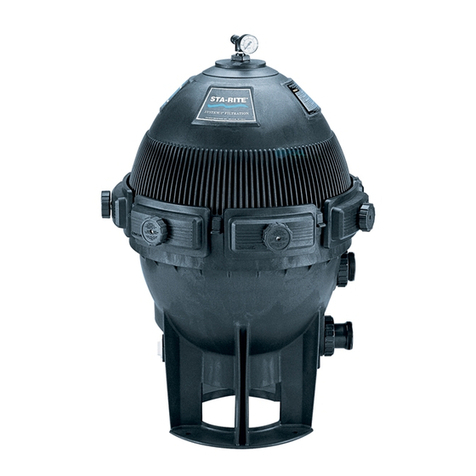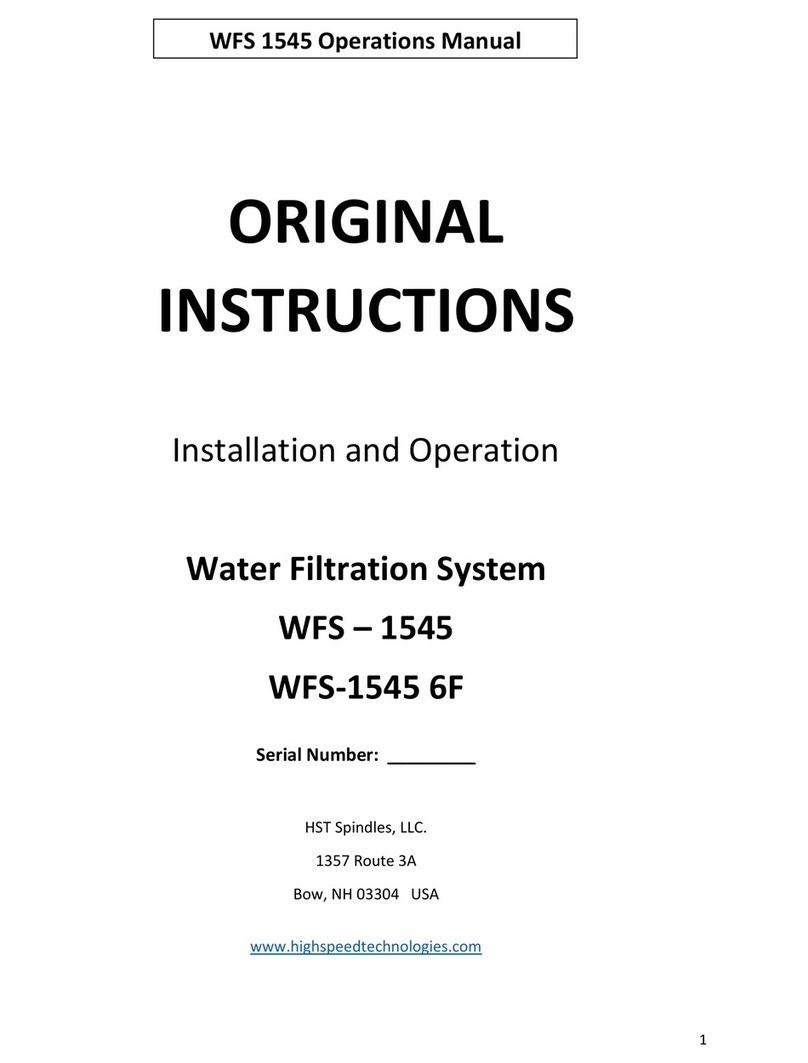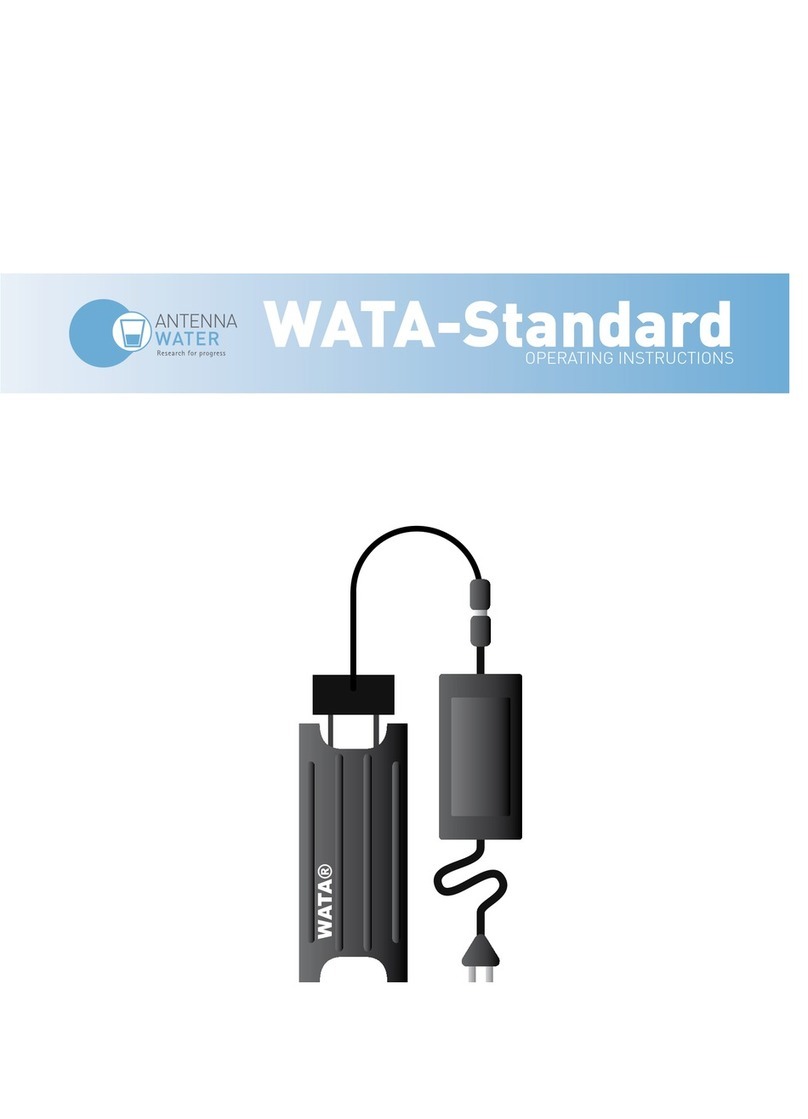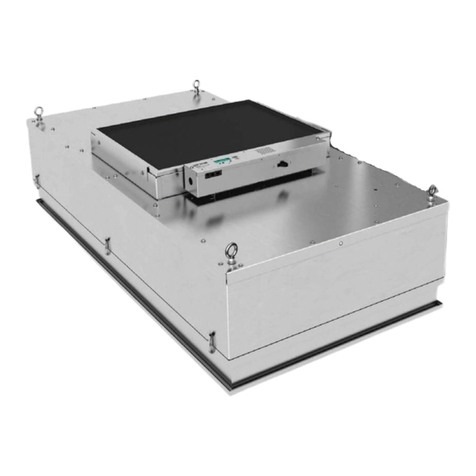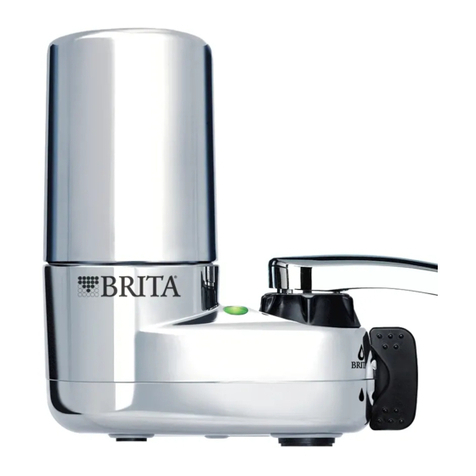
10
f. Filtration
The WFS uses proprietary stainless-steel housings that require three 20” disposable filter
cartridges for filtration of the process water. The filters housings are arranged in two
parallel sets of two. One set of two filters for the Internal Recirculating Loop and one set of
two filters for the Process Loop.
Valving is provided to isolate any single filter housing to permit filter element change out
without process interruption.
i. Filter Housings
The filter housings are manufactured from 304 stainless steel and rated for 100 psi
maximum pressure and 110o F degrees maximum temperature. 316 stainless is
available at special order.
ii. Filter Elements
Each filter housing is designed to hold three cartridge type filter elements 20in x
2.5in. The housings accept filter cartridges of various composition and filtration
rating. The customer must determine the type of filter element to best satisfy their
requirements. Filter elements are customer supplied and can be sourced from a
variety of providers.
iii. Gauges
Each filter housing has a pressure gauge remote mounted and displayed facing the
control panel. These gauges provide indication of the filter condition. The filter
elements should be changed when the gages indicate a pressure increase in excess
of 15 PSI or in accordance with the filter element specifications.
g. Reservoir
The reservoir is made from polypropylene and divided into three chambers referred to as
the Dirty Side, the Clean Side and Spindle. The reservoir allows return water accumulation
to prevent pump cavitation. It also provides a certain amount of dwell time to allow heavy
particulate to settle out.
Two independent float valves maintain the proper fill levels in Dirty Side and the Spindle
chambers. These valves compensate for minor losses due to evaporation or small leaks and
splashing resulting from the process.
CHAMBER BRIM FULL NOMINAL
ALL 51 35
CLEAN SIDE 8.5 8.5
DIRTY SIDE 13 10.5
SPINDLE 20.6 16
RESERVOIR CAPACITY GALLONS
